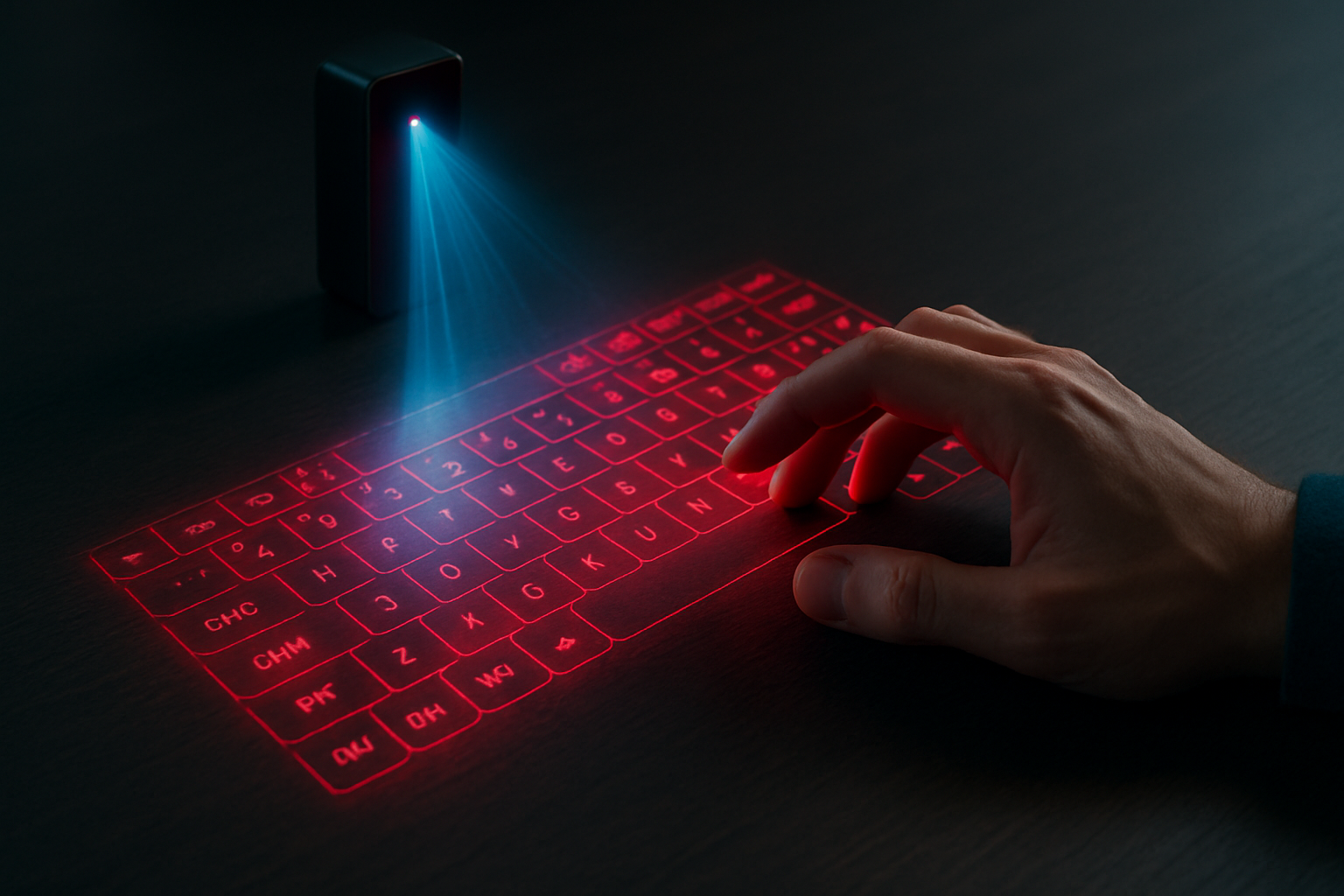Holographic Keyboards: Typing in Thin Air
In a world where technology continues to push boundaries, holographic keyboards emerge as a captivating bridge between science fiction and reality. These futuristic input devices project a virtual keyboard onto any flat surface, allowing users to type without physical keys. As we dive into this cutting-edge technology, we'll explore its potential to revolutionize how we interact with our devices and the challenges it faces in becoming a mainstream input method.

How Holographic Keyboards Work
At the heart of holographic keyboard technology lies a sophisticated interplay of optics and sensors. A small projector casts the image of a keyboard onto a flat surface, while infrared sensors detect the position of the user’s fingers. When a finger “presses” a virtual key, the system interprets this as a keystroke. Some advanced models even incorporate haptic feedback, using ultrasonic waves to create the sensation of pressing physical keys.
Advantages in a Mobile World
One of the most significant benefits of holographic keyboards is their portability. With no physical components, these devices can be integrated into smartphones or tablets, effectively turning any surface into a full-sized keyboard. This feature is particularly appealing for professionals who need to type lengthy documents on the go but find touchscreen keyboards cumbersome for extended use.
Challenges and Limitations
Despite their futuristic appeal, holographic keyboards face several hurdles. The lack of physical keys can make touch-typing difficult, as users can’t feel the boundaries between keys. Additionally, the technology is highly dependent on lighting conditions and surface textures, which can affect projection quality and finger tracking accuracy. These limitations have slowed widespread adoption, keeping holographic keyboards primarily in the realm of tech enthusiasts and early adopters.
The Future of Typing
As holographic keyboard technology continues to evolve, we’re seeing promising developments that could address its current limitations. Researchers are exploring advanced haptic feedback systems that can create more realistic tactile sensations, mimicking the feel of physical keys. Some companies are also experimenting with AI-powered predictive typing to improve accuracy and speed.
Integration with Augmented Reality
Perhaps the most exciting prospect for holographic keyboards lies in their potential integration with augmented reality (AR) systems. Imagine wearing AR glasses that project a keyboard onto any surface, visible only to you. This could revolutionize how we interact with digital information in public spaces, allowing for discreet and convenient typing without the need for physical devices.
Market Impact and Pricing
Currently, standalone holographic keyboard devices are available in the market, with prices ranging from $100 to $300. However, as the technology improves and becomes more widespread, we can expect to see it integrated into smartphones and tablets as a standard feature. This integration could significantly impact the mobile device market, potentially making physical keyboard accessories obsolete for many users.
Conclusion: A Glimpse into Tomorrow’s Tech
Holographic keyboards represent a fascinating glimpse into the future of human-computer interaction. While they still face challenges in terms of accuracy and user adaptation, the technology continues to improve rapidly. As we move towards more immersive and flexible computing environments, holographic keyboards could play a crucial role in bridging the gap between our physical and digital worlds. Whether they become the next big thing in input devices or remain a niche technology, holographic keyboards undoubtedly symbolize our ongoing quest to make technology more intuitive, portable, and seamlessly integrated into our daily lives.





